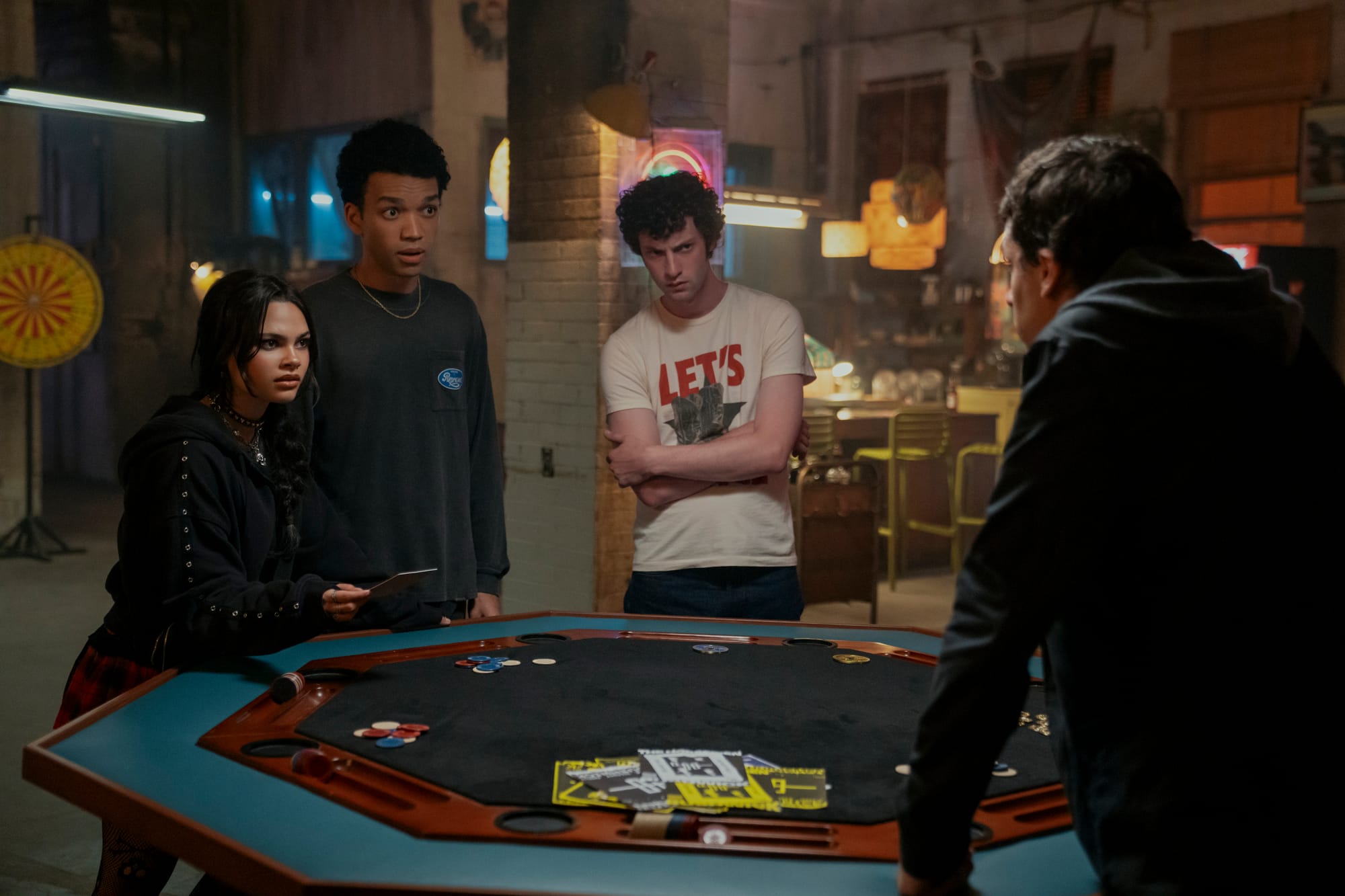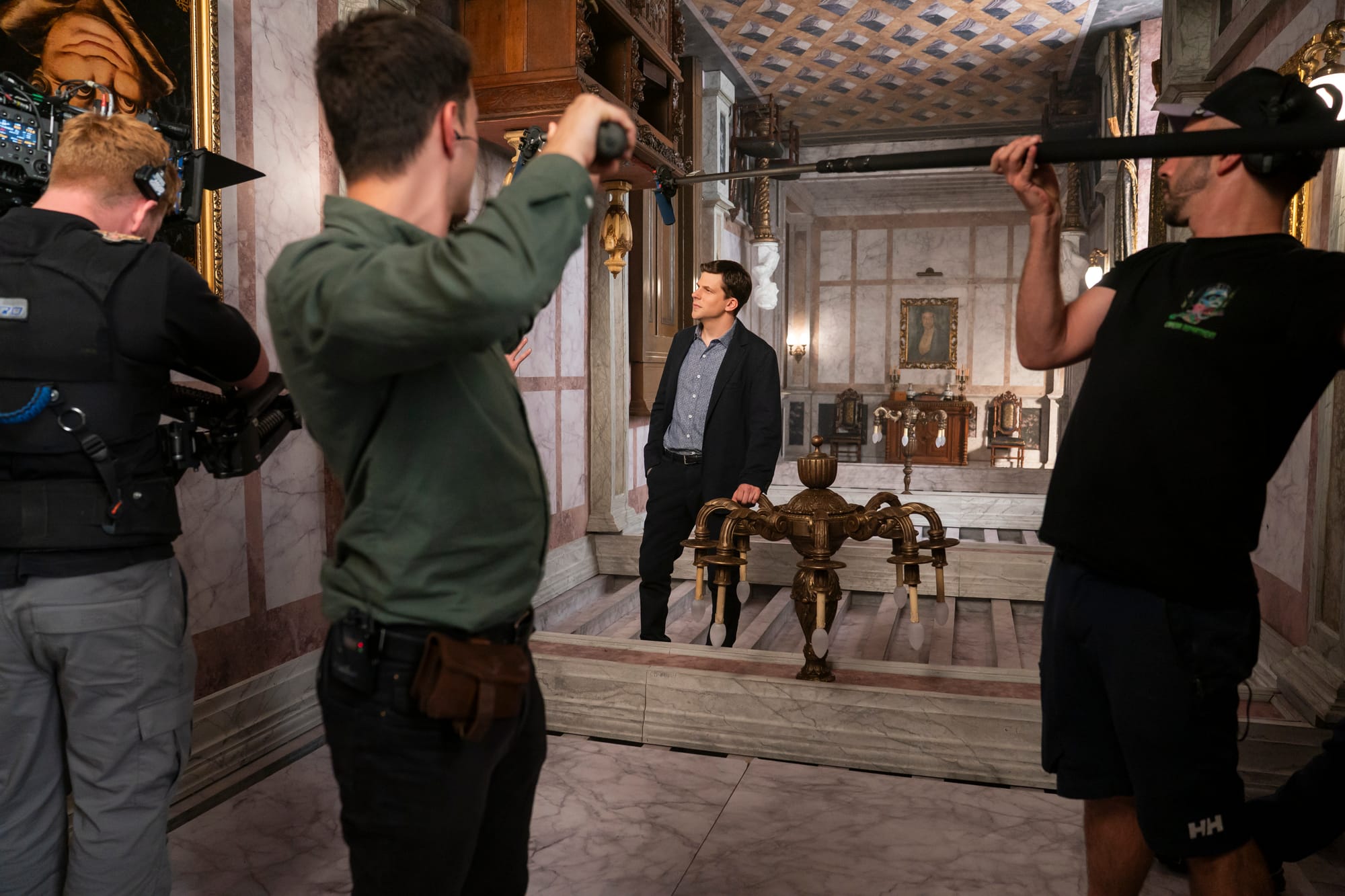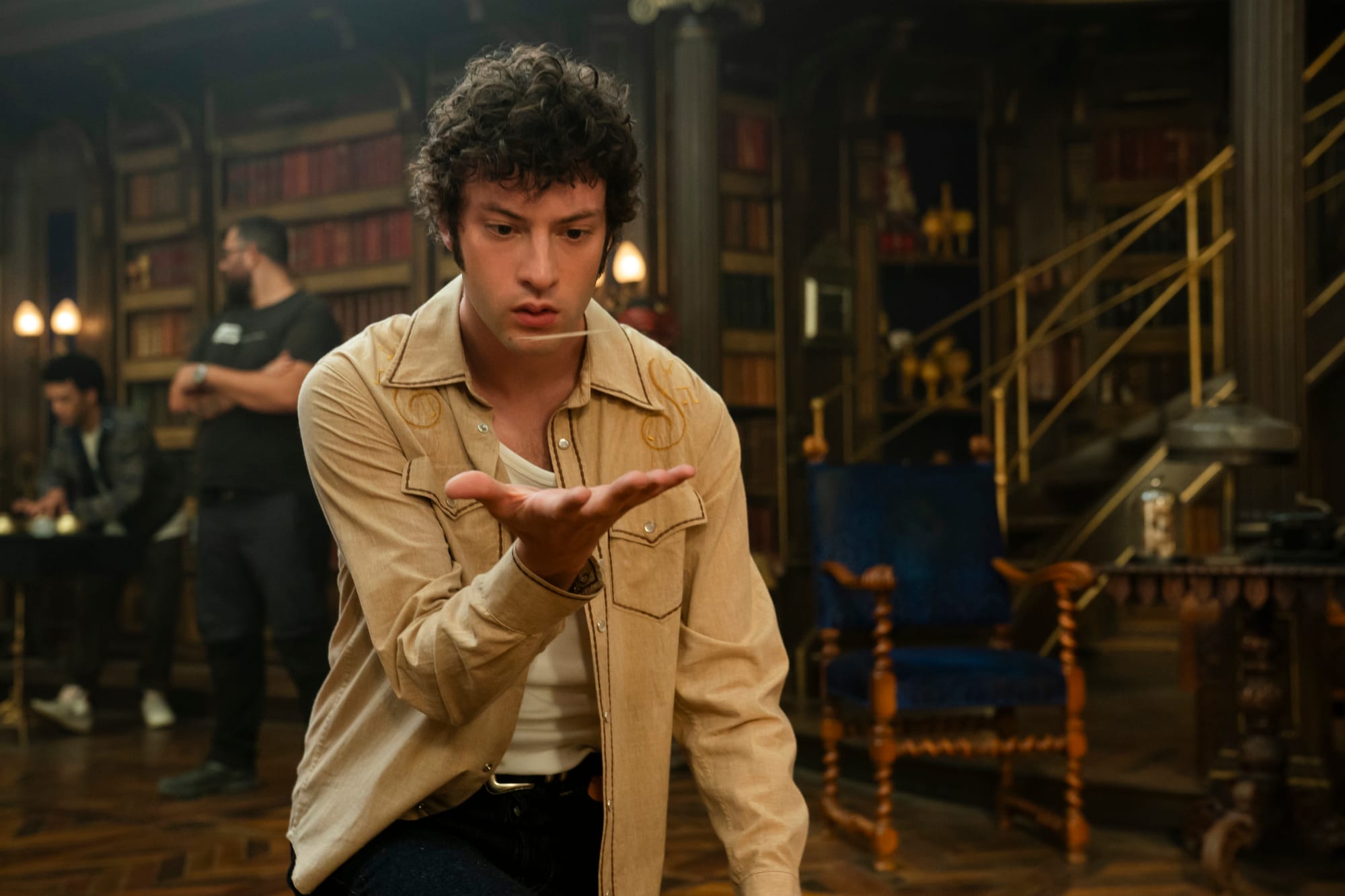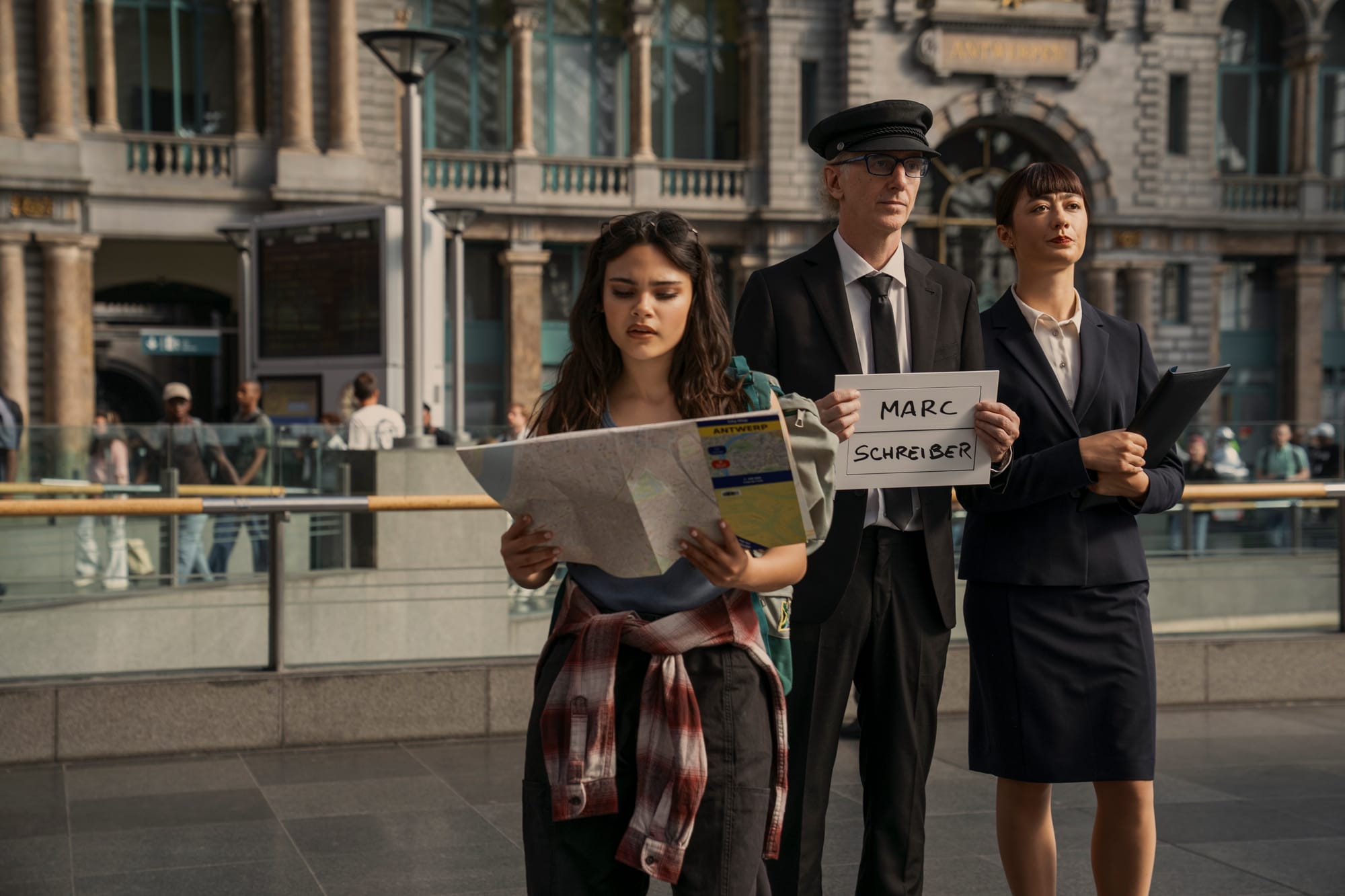“Jared Kopf is my favorite magician, maybe my favorite person. Seriously, I love that guy,” Jesse Eisenberg says as we stand together in a private screening room in New York. It’s our first time meeting. We’d just been introduced by a mutual friend, who happened to mention that I’d worked on the new Now You See Me, Now You Don’t, the same film Jesse had only recently finished in Toronto.
I excitedly share with him that Jared officiated my wedding. It’s a fact only a select few would find notable, much less revelatory.
“Wow! Really? Oh, man, he’s the best!” he says, confirming that he’s among the select. I nod, stupidly proud of my own great taste. In a few minutes, we have common ground. Then he perks up again, still buzzing with curiosity. “So what did you do on the movie? What was your contribution? Did you have, like, one big trick that was your thing?”
I open my mouth and realize I have absolutely no idea how to answer.
It’s been over a year since I finished my work on the project, and none of the ideas I had felt like mine alone. After a long pause, I stammer, “I helped figure out the yacht escape.”
Jesse looks at me a little confused, then nods politely, which is generous, because he did not film any yacht escape. That entire sequence had been rewritten and cut long before cameras rolled. I realize my mistake, but I can’t explain what happened fast enough. Mercifully, the lights dim and the film begins. We shake hands and take our seats.
I sit there in the dark, waiting for his movie to start, and think about the opaque vagueness of creative work, how something you once obsessed over can drift so completely from your memory that when asked to describe it, you are left with nothing but the echo of an idea—one of hundreds of ideas.
Only then does it dawn on me what my “big contribution” might have been….

The Challenge
In early December 2023, Randy Pitchford called me and asked if I might be interested in joining him as a magic consultant on the next Now You See Me film, titled Now You See Me, Now You Don’t.
The executive producer, Ethan Smith, reached out to Randy because he had just worked with him on the Borderlands film—based on Randy’s famous Gearbox game. Ethan knew of Randy’s ties to the world of magic, and The Magic Castle’s well-known reputation for working with experienced magicians.
Randy suggested an innovative approach for the magic. Rather than the traditional formula, he proposed using the connection of The Magic Castle to assemble the first “magic department” on a movie. As he explained, “Rather than use a magician or two to work with the other departments, like props and art direction, I thought that we needed a magic department, made up of magicians, that could define the way that the magic works through the film.”
In many ways, the concept matched the film: Randy and The Magic Castle would need to organize their own “Horsemen” to match the fictional Horsemen in the movie. These experienced magicians would work behind the scenes to offer a range of skills—working on the story and then supervising the magic as it’s put in front of the camera.
The filmmakers jumped at the opportunity. They had a script, but the director, Ruben Fleischer, wanted all the magic in the movie to be “real,” with as little CGI as possible. They all felt that the magicians in the story should do things that could “really happen.”
Why would Randy call me? Well, the short answer is because I make movies for a living. Specifically, I write and produce. My interest in magic came about 12 years ago after a visit to The Magic Castle, which in many ways changed the course of my life.

Around that time I lived in Dallas. Through pure coincidence, Jared Kopf and I were living just a few blocks apart. I more or less forced him to become my friend, and later joined him for the first-ever Peacock Theater show at the Pitchfords’ home in Frisco, Texas. I kept coming back and became friends with everyone who worked and performed there over the years, including the Pitchfords.
Since then, Randy and I have been circling various projects together for years, and we thought this film could be a fun jumping-off point to finally work together. We considered the pros and cons, and ultimately decided it would be a great opportunity to bring in a few of our dream collaborators.
That one phone call kicked off what would become a years-long journey, split into two very different chapters. First we’d be involved in the script phase, and then we’d have to deal with the actual production.
The Script Phase
Randy and I came up with our dream list in about two minutes. It was a no-brainer. Jim Steinmeyer, Jared Kopf, plus a list of likely collaborators who would bring their own skills to the project.
Jim needs no introduction to readers of Genii. He is a legend, a designer of illusions for leading magicians and Broadway shows, a writer, a historian, a man whose brain seems to run on geometry and mystery. Jared brought the warmth and performer’s instinct that made every idea feel human. I was there to help develop the narrative structure and find the emotional spine behind the tricks.
Randy is a fire hydrant of brilliant ideas, for both the magic and the story. Very quickly we were working as a cohesive unit. That’s what happens when you’re part of a good team. The individual fades away. Nobody had an ego about anything, and every idea sought to move the project forward.
We started having regular Zoom meetings with the producer, Bobby Cohen, the director, Ruben, the new writer Michael Lesslie, and the executive producer, Ethan Smith. Like Ruben, they were remarkably open to our ideas and wanted the magic to feel realistic.
We spent weeks getting to know one another and pitching ideas back and forth. The producers had the nearly impossible task of trying to get a green light quickly. There was only one possible production window where all the cast were available. They needed a strong draft the actors could get behind, something exciting for Ruben, and something that was within the budget for Bobby.
We had about three months to get it right, and our discussions became a mixture of, “How do we make this thing disappear?” to “What happens in the third act?” With Randy leading the team, our discussions combined the plot points with the magical elements, and everything was carefully fit together.
Think Like a Magician
It is impossible to overstate how hard it is to bring a non-magician into our thinking. Generally speaking, they can’t imagine magic or how it can be included in any scene. The tendency is to look for quick tricks—bang, bang, bang—that just punctuate the action. Jared eloquently brought them into the fold one day by explaining, “You can’t just ‘add’ magic to a finished scene; you write a scene that only works because of the magic.”

This was a revelation to the writer, Michael, who was learning not just to just take our ideas and try to squeeze them into a preconceived story beat, but to let these ideas inform the story.
Sometimes we’d pitch ideas and Ruben, the director, would say it’s “too unbelievable,” only to have Jim mock up a cardboard version of the idea on Zoom to prove it could be done. “Well, OK, I guess I was wrong. Jim wins again,” Ruben would laugh.
One such idea was the helicopter escape, where the gang is chased by police to the top of a building. They climb into a helicopter only to disappear in an explosion of smoke seconds later. (Spoiler: It’s lots of smoke and a two-dimensional flat. It’s in the movie.)
The producer, Bobby, desperately wanted a trick where the audience could play along. Ruben insisted that Merritt (Woody Harrelson) needed to perform this effect. We pitched numerous ideas before Jared leaned in on a classic, Vernon’s Five Card Mental Force. Ruben refused to believe it could work. Jared, challenged, performed the effect on our Zoom call. Of course he nailed it for every single person on that call. Yet, even after being fooled, Ruben wasn’t convinced if it would work on an entire audience.
One of the big set pieces of the film is a magic duel between all the magicians in their version of a Magic Castle. We spent weeks coming up with different ideas that could be performed believably in one long take, with no cuts. There were probably 50 different versions of this sequence between the magicians, on our own separate thread.
This was a great joy for all of us, and also the hardest part to sell to the film team. Ruben needed to see how each effect could work and lead into the next trick. After a few months, the script was in good shape, but we hadn’t nailed the ending. Expectations were starting to mount. The studio liked the direction things were headed, but needed a full draft to green-light.

The magicians suggested some locations where the action could take place, and outlined an elaborate sequence: breaking into a luxury yacht anchored in Abu Dhabi, and then improvising a meticulous escape. We spent weeks breaking down all of the effects and methods to make it believable for Ruben. The writer, Michael, took our ideas and assembled the pieces. That ultimately convinced the creative team. Hurrah!
A few weeks later we would reconvene to work out some kinks with new writers. Michael had a prior engagement and had to leave to work on a project for Marvel. That’s when we got some bad news about the yacht escape.
The yachts we needed could not be docked in Abu Dhabi. That idea couldn’t work. But the new writers were undeterred, and suggested a new sequence around the local Formula One track—a sequence that would literally shift gears to include a breathtaking, high-speed chase through the city.
With the completion of this unexpected new sequence, we were able to focus on the nuts and bolts production questions. Ruben, Bobby, and Ethan were starting to scout locations around the world, and Randy started building the on-the-ground magic team. It was time for Jim and I to take a back seat—turning over the magic to the crew who would actually make it work as the cameras rolled.
The Production Phase
Within a few weeks, Randy had assembled the crew that would join the production in Budapest: John Lovick, Ben Seidman, Nils Bennett, Jordan Gold, Léa Kyle, and Jared Kopf. They would work in waves coming in and out over the next six months to complete production.
The plot of the new film sets the stage for a whole new crew of magicians to take over from the original Horsemen. The younger cast were completely new to magic and were starting from scratch. For two months of preproduction, John and Ben worked with the cast on fundamentals and sleight of hand. John is no stranger to high intensity situations on the set or backstage.
“I came in when things were moving fast,” he said. “They’d scheduled the hardest stuff first, which was brutal—but once you survive that fire, everyone knows the dance.” The “fire” was the soon to be legendary magic battle sequence: a single, long, trick-dense take in which all the magicians face off in an escalating series of practical effects. Here’s a look at how it turned out:
It was front-loaded on the schedule, meaning the department had to solve its most complex problems before the team had any collective rhythm. Props lagged, rehearsals ran late, and the camera crew—accustomed to setting angles early—had locked in shots that made some effects literally impossible. “Most effects are angle-dependent,” John explained. “If you lock the camera before you ask the magicians, you’ve already limited which miracles are possible.”
In those first weeks, nerves ran high. The actors were rehearsing with placeholder props, so no one could visualize how the tricks would actually work. Producers grew anxious. The director doubted feasibility. Then something clicked. The magicians began shooting rough iPhone tests, painting out stands and clean-ups by hand to simulate the finished frame. “You’re not just pre-visualizing a shot,” John explained. “You’re pre- visualizing belief.”

When the department finally ran the full “magic battle” sequence with real props, camera, and stunt assists, the set transformed. Behind the lens, magicians and crew operated like a pit team: sliding in loads, catching hidden drops, vanishing out of frame seconds before the camera swung past.
Nils Bennett recalled, “During shooting I was sneaking behind Morgan Freeman with a fishing rod, waiting for my cue to lower a card like a ninja. There was so much going on—sound, camera, light—and I just had to move through the chaos in silence. It was madness—but it worked.”
“If we can do that, we can do anything,” one crew member said as they wrapped. Confidence spiked. The stress evaporated. The department’s value became obvious.
Jared Kopf, who had helped shape the script months earlier, watched the footage later and recognized something rare. “What you see isn’t choreography of movement—it’s choreography of belief,” he said. “We taught the actors the dance—where to look, how to breathe—so the moves would read as character, not mechanics.”
The irony, of course, is that the better the practical work looked, the more viewers would assume it was CGI. “We did it for real so well that audiences will swear it’s digital,” John said, laughing. “That’s either the highest compliment or the strangest curse.”
Lovick’s role extended beyond the spectacle sequences. He also appeared on camera, as a limousine driver who pulls off a bit of magic.

During quieter story moments, he and Jared coached Justice Smith on one of their proudest on-set accomplishments: a simple thumb-tip silk vanish, a sleight so small it could almost disappear within the movements that surround it.
“That vanish lives inside the scene,” Jared said. “No dramatic pause, no wink. Just a moment of honesty that happens to be impossible.”
Both he and John cite it as one of the film’s high points—because it ties performance, character, and method into a single beat of story.
The film crew wanted results on a schedule; the magicians insisted that magic can’t be rushed. “On a film you can cut straight to the miracle,” Jim told me, “but in real magic, you have to build the miracle in front of people.”
On set, that lesson translated into logistics: rehearsals had to happen in real time, not jump-cut fragments. The actors had to learn to earn the moment of astonishment. That philosophy proved crucial during reshoots in Toronto.
On the third morning of pickups, the director approached John with a small panic: the story needed a new, impressive piece of magic for a scene shooting in two hours. No prep, no rehearsal, only the props already on set.
On the van ride to location, a 15-minute drive, John brainstormed five options. The director picked one: a rising-card routine adapted with a tarot card Jesse’s character had used earlier in the film. It solved the immediate problem and tied the story elements together. “The rising tarot card wasn’t just a trick,” John said. “It stitched the story’s first meeting to the last goodbye.”
Magic On-Screen
By the end of production, the department had earned a reputation for reliability. No failed setups, no “we can’t make this work.” Whatever the director asked, they found a way.
“The magic team never dropped the ball,” John said. That steadiness mattered. Other departments were juggling budget cuts, location changes, and cast conflicts. The magicians just kept producing miracles.
Not every idea survived intact. The planned yacht escape, the sequence I’d helped assemble with the writer, was reconfigured into an amazing “sand trap” set piece, a demonstration of the Horsemen’s mastery of illusion.
“That’s production,” John said with a shrug. You start with one concept, and then realize that it’s grown into something strikingly different, in order to tell the story in the most impressive way. But that’s also the magician’s art: to make something feel bigger than it is.

When the team finally screened the LA director’s cut, the collective relief was palpable. The movie worked, better perhaps than anyone expected. The pacing was tight, the tricks played clean, and the magic, though practical, glowed with impossible precision.
Audiences would never see the crew just off camera, the sleepless nights rehearsing angles, or the frantic van-ride trick design. But maybe that’s fitting. The best magic, like the best filmmaking, is defined by what’s hidden. Watching that cut, I realized how much of what we’d built was designed to disappear. The audience never sees all the work behind the curtain, and that’s how it should be. Every magic show represents a small amount of the work happening behind the scenes.
This brings me back to Jesse’s question at his screening: What did I do?
When I told Jesse about the yacht escape, what I really should have explained was that I helped imagine an important step along the way. Those elements may not have survived, but the ideas guided the next choices—the car chase and the path through the desert—that will dazzle the audience.
In truth, my biggest contribution may have been helping to define the spirit of collaboration that carried through all the phases. The illusion of authorship is strong in filmmaking. It tempts you to claim credit for individual moments. But the reality of a project like this is collaborative. Everyone contributes an idea, an instinct, a correction, a metaphor, and somewhere in the mix, the magic emerges.
Jared, who faced the challenges in the script as well as the choreographed magic on the set, often compared the process to designing a puzzle whose solution is destroyed before anyone can solve it.
That is the paradox of our work. The better we do it, the less anyone notices we were ever there.
